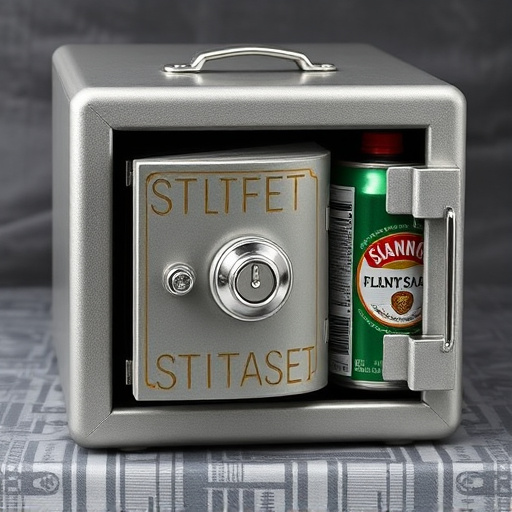The Concealed Diversion Safe Comparison Guide explores how everyday household items can be transformed into robust safes, enhancing home security and personal privacy. By integrating secure compartments into furniture, bookshelves, and kitchen appliances, users can discretely store valuable items like documents, jewelry, or cash. The guide compares traditional concealed safes with household item transformations, focusing on material quality, construction techniques, and realistic design elements for seamless integration into various environments.
Uncover the world of hidden compartments—a secret sanctuary within everyday items. This comprehensive guide explores the art of concealing valuables, offering a fascinating look at enhancing privacy and security. From identifying potential spaces in common household objects to delving into diverse safe types like book safes and mirrored furniture, we navigate the benefits and risks.
Learn about size, concealment, and price considerations when choosing a concealed diversion safe, backed by real-world case studies. Discover the latest trends, ensuring you’re equipped with knowledge for both practical security and ethical considerations.
- Identifying Potential Hidden Compartments
- – Everyday items with hidden spaces
- – Design features and secret compartments
- – Materials and construction hints
Identifying Potential Hidden Compartments
When it comes to identifying potential hidden compartments in common household items, it’s helpful to understand the concept of concealed diversion safes. These are cleverly designed storage solutions that seamlessly blend into everyday objects, offering a secure space for valuable items like documents, jewelry, or even cash. By comparing different types of concealed safes available in the market, you can gauge their features, capacities, and ease of integration into your home decor.
A thorough examination of household items with a keen eye for unusual cavities or modifications is key to uncovering hidden compartments. Consider furniture, bookshelves, or even kitchen appliances as potential candidates. Some clever designers have integrated secret storage spaces within book covers, old suitcases, or seemingly ordinary wall art pieces. By referring to a comparison guide for concealed diversion safes, you can learn about various mechanisms and features that ensure the security and discreteness of these hidden compartments, making them ideal solutions for both home security and personal privacy.
– Everyday items with hidden spaces
In today’s world, where discretion and security are paramount, everyday household items have evolved into more than meets the eye. A simple bookcase isn’t just for books anymore; it can house a concealed diversion safe, blending seamlessly with your decor while providing a secure space for valuable items. Similarly, a seemingly ordinary desk organizer could be a cleverly designed compartment, offering a discreet solution for important documents or small treasures. The Concealed Diversion Safe Comparison Guide highlights these innovative designs, showcasing how common household items can double as robust safes.
By integrating security into everyday objects, these hidden spaces provide an added layer of protection without compromising aesthetics. Whether it’s a media console hiding a firewall safe or a kitchen cabinet transforming into a disguised gun compartment, the possibilities are endless. The guide explores various options, helping users make informed decisions based on their specific needs and preferences, ensuring peace of mind in an ever-changing world.
– Design features and secret compartments
In the realm of concealed diversions, household items often serve as the perfect canvas for secret compartments. These design features, cleverly integrated into everyday objects, offer a unique twist to the concept of hidden safes. A comparison guide reveals that while traditional Concealed Diversion Safes cater specifically to securing valuables, household items with built-in secrets provide an intriguing alternative. From vintage furniture pieces with concealed drawers to books with secret compartments, these items blend functionality with deception.
Each option presents its own set of advantages. For instance, a beautifully crafted wooden box with a hidden latch can double as both storage and a work of art. Alternatively, a modified bookcase not only displays literature but also houses a secret space for discreetly storing smaller items. These concealed diversions offer a subtle approach to security, allowing individuals to safeguard their possessions while maintaining an aesthetically pleasing environment.
– Materials and construction hints
When considering hidden compartments within common household items, it’s crucial to understand the materials and construction techniques used. A well-crafted concealed diversion safe might employ dense, solid wood like oak or mahogany for its core, making it sturdy and less susceptible to detection. The exterior could be designed with a false bottom or a hollow space, cleverly disguised as a regular storage area. Meticulously crafted joints and hidden hinges allow the item to blend seamlessly into its surroundings, such as a bookcase or a kitchen cabinet.
In contrast, cheaper alternatives might use lighter materials like plywood or pressed wood, which can be more easily detected if not properly sealed. A comparison guide for concealed diversions should also consider the level of craftsmanship and the attention to detail. Smooth, polished surfaces and clever design elements, such as false labels or adjustable shelves, contribute to a realistic appearance while serving as red herrings. Ultimately, the goal is to create a safe that blends seamlessly into its environment, making it an effective hiding place for valuable items or sensitive documents.
In our comprehensive Concealed Diversion Safe Comparison Guide, we’ve explored how everyday household items can double as clever hiding spots for valuables. By understanding the subtle design features, materials, and construction hints, you can now identify potential hidden compartments in a variety of common objects. Whether you’re looking to secure important documents or keep precious items out of sight, these creative solutions offer both discretion and peace of mind.
